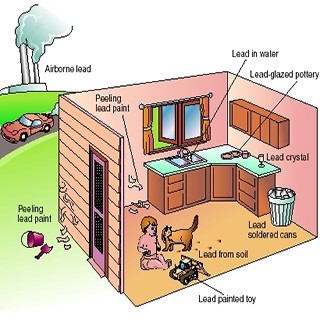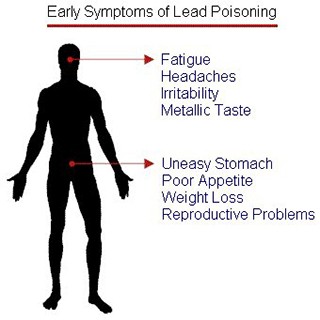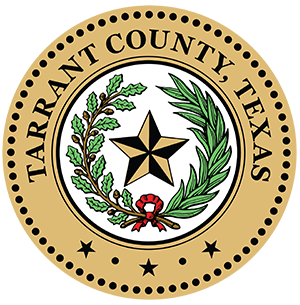
Lead Health Dangers
Lead is a naturally occurring metal that is harmful if inhaled or swallowed. Lead can be found in air, soil, dust, glazed pottery, toys, food, candy and water via the plumbing fixtures and piping.
How can I be exposed to lead?
The most common source of lead exposure is from paint in homes and buildings built before 1978. Adults and children can be exposed to lead from various sources, such as paint, gasoline, solder and consumer products and through different pathways, such as air, food, water, dust and soil. Although there are several exposure sources, the main sources of exposure to lead are ingesting paint chips and inhaling dust. The dust is so small you cannot see it. Most children get lead poisoning when they breathe or swallow the dust on their hands and toys.
Why is lead a health issue?
Lead can be harmful. It can impact normal physical and mental development in babies and young children. Lead can cause deficits in the attention span, hearing and learning abilities of children. Lead can increase blood pressure in adults. Most children who have lead poisoning do not look or act sick.
What are the risks of lead exposure?
Lead can cause a variety of adverse health effects when people are exposed to it. These effects may include increases in the blood pressure of some adults; delays in normal physical and mental development in babies and young children; and deficits in the attention span, hearing and learning abilities of children.
How do I keep my children away from lead paint and dust?
Use wet paper towels to clean up lead dust. Be sure to clean around windows, play areas and floors. Wash hands and toys often, especially before eating and sleeping. Use soap and water. Use contact paper or duct tape to cover chipping or peeling paint.
Information for parent with small children can review these Lead Poisoning Fact
Information has been provided by our partners at the
Texas Commission on Environmental Quality
Fort Worth Water Department:
Tips for Reducing Lead in Drinking Water


Who to contact for more lead information
These websites provide information about childhood lead poisoning prevention activities within federal government agencies, state and local lead programs.
Federal Partners
Centers for Disease Control and Prevention list numerous ways parents can identify and control or reduce lead hazards in a child's environment.
Consumer Product Safety Commission (CPSC) provides informational alerts about the presence of lead in consumer products.
Department of Housing and Urban Development (HUD) provides information about HUD programs that address lead-based paint in housing. This site also provides guidelines on controlling lead-based paint hazards, a list of helpful documents for property owners.
Environmental Protection Agency (EPA) includes information about lead regulations and policies, training and resource materials, and lead poisoning prevention programs
Food and Drug Administration (FDA) provides information about the presence of lead in food, cosmetics, and other products such as dishware. The site also provides information about lead-testing devices.
National Lead Information Center (NLIC) provides access to information about lead hazards and their prevention. Information specialists are available to answer questions about lead-based paint hazards, lead abatement, and control and risk-assessment methods. Brochures, posters, and additional educational materials are also available.
State and Local Healthy Homes and Lead Poisoning Prevention programs
State and Local Healthy Homes and Childhood Lead Poisoning Prevention Programs (CLPPP's) provides access to information on a specific state or local area CLPPPs.
Texas Department of State Health Services provides a Blood Lead Surveillance Group which maintains a surveillance system of blood lead results on children younger than 15 years of age and adults older than 15 years of age.
Nonfederal Partners
National Center for Healthy Housing (NCHH) provides information and resources on how to protect children from residential environmental hazards while preserving the supply of affordable housing. NCHH is a private, nonprofit organization.
National Safety Council (NSC) provides information through the Environmental Health Center about outreach meeting and training sessions that will give community-based organizations the tools and skills to enable them to plan and execute successful lead poisoning prevention programs in their communities.

 TARRANT COUNTY, TX
TARRANT COUNTY, TX

 Environmental Health
Environmental Health